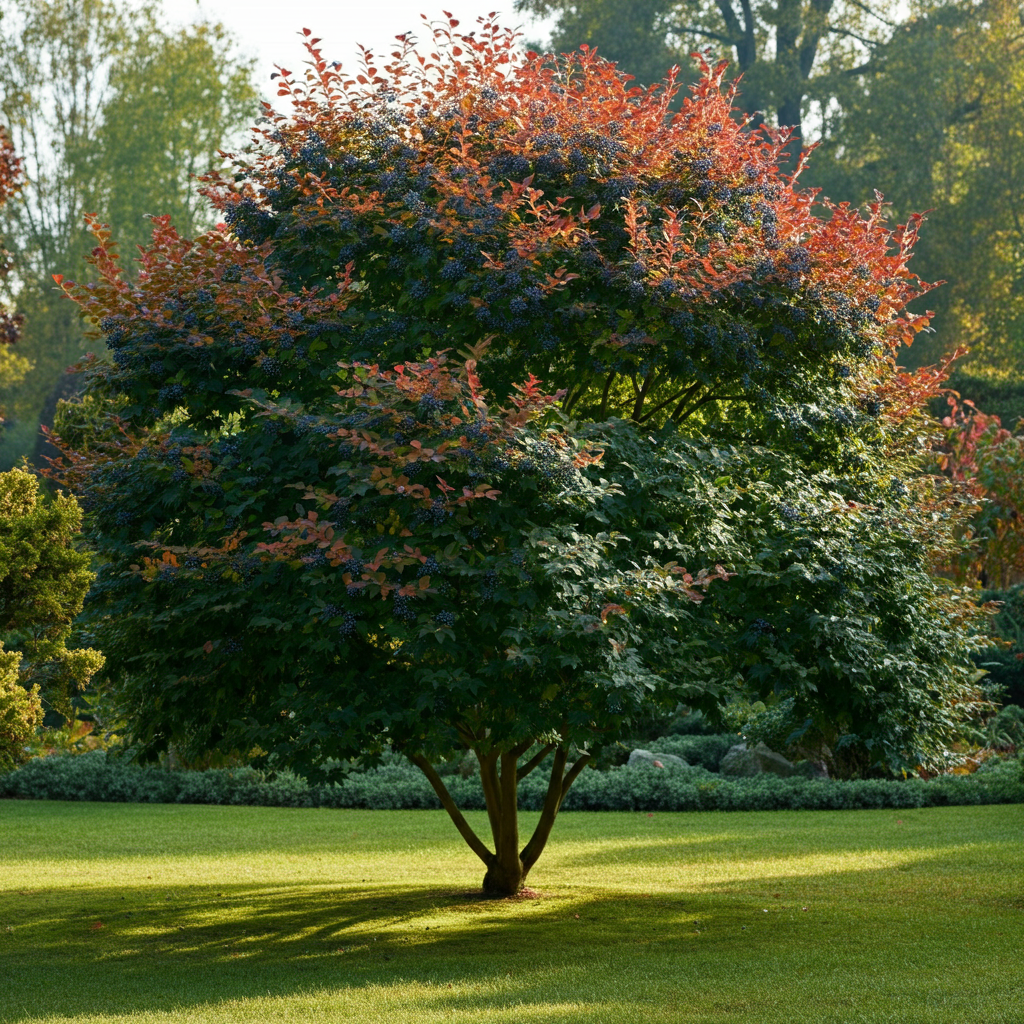The Japanese Blueberry Tree (Elaeocarpus decipiens) is more than just a beautiful, ornamental addition to your garden. It’s an evergreen tree prized for its glossy green foliage, seasonal berries, and adaptability to various environments. Whether you’re looking for a statement tree for your landscape or a compact shrub to complement your garden, this guide will provide everything you need to know about Japanese Blueberry Tree care.
Table of Contents
Characteristics and Features of the Japanese Blueberry Tree
Size and Growth Rate
The Japanese Blueberry Tree grows at a moderate pace, reaching a mature height of 40 to 60 feet with a 20- to 30-foot crown. This makes it suitable both for landscaping as a shade-providing tree or as a privacy hedge when pruned into a shrub or topiary form.
Hardiness Zones and Climate Preferences
Japanese Blueberry Trees thrive in USDA Hardiness Zones 8 to 11. They love warm climates, making them perfect for regions like the Pacific Northwest, Southern California, and parts of the South. However, these trees can tolerate occasional light frosts down to 20°F (-6°C) if properly protected.
Foliage and Berries
One of the most striking features of this tree is its year-round, glossy green leaves. Older leaves shade into hues of red and orange before shedding, adding a burst of seasonal color. The tree also produces small, non-edible blue-black berries that attract birds and other wildlife but can be messy if left unchecked.
Planting and Care Tips
Best Time and Location for Planting
For the best results, plant your Japanese Blueberry Tree in the late spring or early fall. Choose a location that receives full sun to partial shade for at least 6 to 8 hours daily. Keep the tree at a safe distance from patios, driveways, or high-traffic areas to minimize cleaning up fallen berries.
Soil and Watering Requirements
Japanese Blueberry Trees thrive in well-draining, slightly acidic to neutral soil with a pH of 6.1 to 7.5. Water the tree regularly during its early establishment, ensuring the soil stays moist but never waterlogged. Once established, these trees are moderately drought-tolerant but benefit from occasional deep watering, especially during hot summers.
Fertilizing and Pruning
A balanced fertilizer applied twice a year (in spring and late summer) will enhance growth and foliage vibrancy. Prune during the tree’s juvenile years to shape its canopy and encourage vigorous growth. Annual maintenance pruning will help thin the canopy and remove any dead or damaged branches.
Light Needs
Provide your Japanese Blueberry Tree with full sun to partial shade. Strong sunlight promotes healthy foliage and supports berry production, while shaded areas can result in sparse growth and reduced vigor.
Potential Problems and Their Solutions
Common Pests and Diseases
Japanese Blueberry Trees are generally pest-resistant but can occasionally attract aphids or scales. Treat infestations with insecticidal soap or neem oil. Additionally, monitor for signs of fungal issues like leaf spots, which can be managed through proper pruning to enhance airflow and the use of fungicides.
Messiness Concerns
While beautiful, the Japanese Blueberry Tree can be messy due to its shedding leaves and fallen fruit. To minimize cleanup:
- Install the tree away from paved surfaces or patios.
- Regularly rake and clear tree litter.
- Consider opting for dwarf varieties if you’re tight on space.
Environmental Benefits
The Japanese Blueberry Tree isn’t just for decoration; it’s a champion for local ecosystems. Its fragrant flowers and berries attract essential pollinators like bees, butterflies, and birds. This boosts your garden’s biodiversity and strengthens nearby flora. Additionally, the tree’s dense canopy provides shade and helps reduce urban heat effects in residential spaces.
Frequently Asked Questions
How big does a Japanese Blueberry Tree get?
It grows 40 to 60 feet tall with a crown spread of 20 to 30 feet.
Are Japanese Blueberry Trees messy?
The tree can be messy due to fruit and leaf litter. Regular maintenance can help manage this.
Can you eat blueberries from a Japanese Blueberry Tree?
No, these berries are not edible for humans, but birds love them. They’re pet-safe too!
Do Japanese Blueberry Trees attract bees?
Yes! The fragrant flowers are beautiful to bees, butterflies, and other pollinators.
How deep are the roots of a Japanese Blueberry Tree?
The tree’s roots typically extend 2 to 3 feet deep and spread laterally up to 5 feet, making them efficient at accessing nutrients and moisture.
Why is my Japanese Blueberry Tree losing leaves?
Potential reasons include transplant shock, improper watering, or nutrient deficiencies. Address the specific issue to restore health.
Can Japanese Blueberry Trees survive a freeze?
They can tolerate temperatures as low as 20°F (-6°C) with proper protection. Move potted trees indoors for extended freezes.
Do Japanese Blueberry Trees need a lot of water?
No, allow the soil to dry between waterings. Overwatering can lead to root rot.
Do Japanese Blueberry Trees live long?
With proper care, Japanese Blueberry Trees can live 50 to 100 years, making them a lasting centerpiece in any landscape.
Bringing Beauty and Function to Your Garden
The Japanese Blueberry Tree is an excellent addition to any garden or landscape, offering lush greenery, wildlife attractions, and timeless beauty. Care is straightforward with proper planting, watering, and maintenance practices. While a bit of leaf and berry litter may require cleanup, the benefits far outweigh the inconvenience.
Looking for your next tree? Elevate your outdoor space with the stunning Japanese Blueberry Tree today. Its combination of elegance and hardiness makes it a garden essential!

